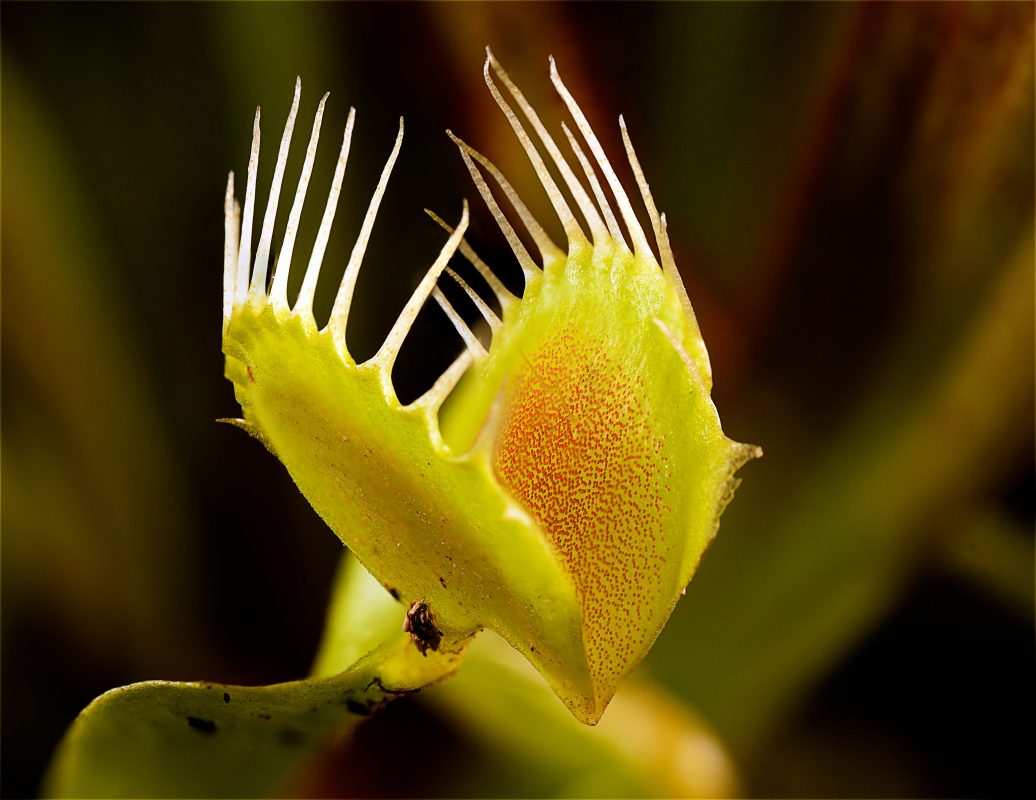Have you ever heard about the carnivorous plant? It is also known as Venus fly traps (Dionaea muscipula), Venus flytraps, or just flytraps with the most unusual look all over the world. Many homeowners are in favor of this Venus flytrap plant not because of its appearance but its function: eating insects!
With their spiky fringed teeth along the bifold jaws, this plant becomes a wonderful trap for an insect to land on. Unfortunately, many people cannot choose this Venus flytrap because of its short life. However, this generally comes from the reason that people don’t have proper care for this hungry carnivorous plant.
In this article, we’ll show you how to have appropriate Venus fly trap care so that it can live up to 20 years indoors. That’s not difficult to do so, just by providing the right conditions and a little different care compared to other indoor plants, your plant will be more stunning.
Find more services about Renton landscaping here!
Description About Venus Flytrap – Renton Landscaping
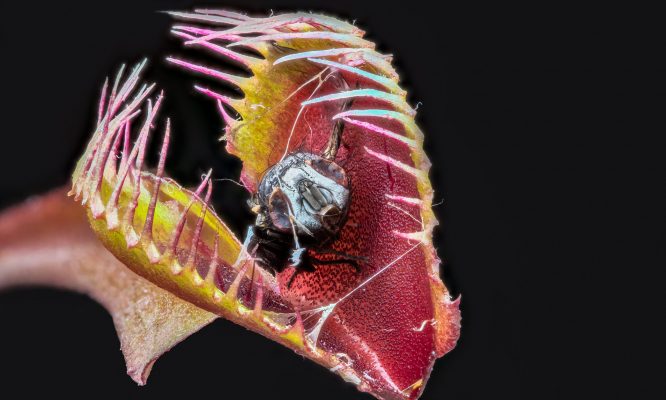
Not originating from the Venus planet, the Venus flytrap (Dionaea muscipula) is a carnivorous plant native to North and South Carolina. The Venus flytrap plant, which belongs to perennial trees, prefers acid soil with direct sunlight, water, and light. Venus fly is hardy between zones 6 and 10 to best survive in winter without falling leaves.
The average mature size of a Venus fly trap is from 6 to 12 inches tall and 6 – 9 inches wide which is possible to grow indoors under the right conditions. Naturally, this plant can grow in nutrient-poor soil but needs keeping continually damp with standing water. Its primary function is to capture insects and pests such as flies and mosquitoes in your garden.
Varieties of Venus Flytraps
If you wonder about how many types of Venus flytraps are there, the answer is only one!
Venus flytrap is in a monotypic genus, which means there is only one species called Dionaea muscipula. However, this plant also comes in a dozen of variables that look a little different than the wild Venus fly traps, such as Akai Ryu (known as Red Dragon) with dark red, Red Piranha with green stems and redheads, Purple Haze with deep purple traps, and so on.
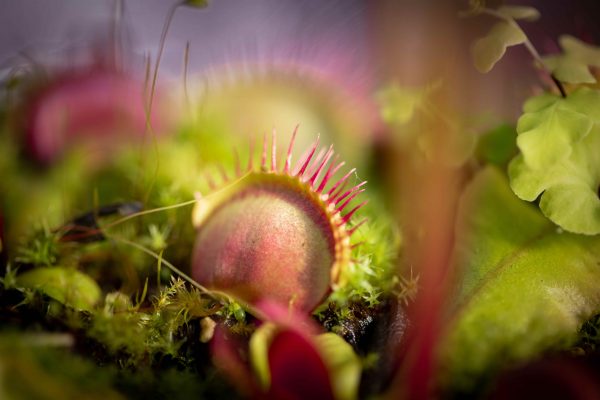
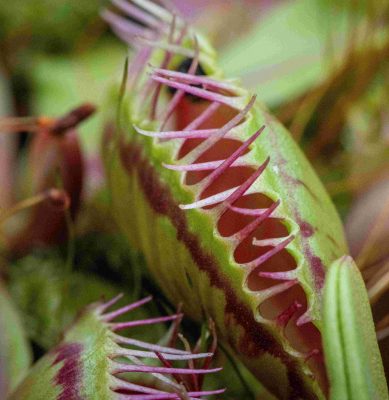
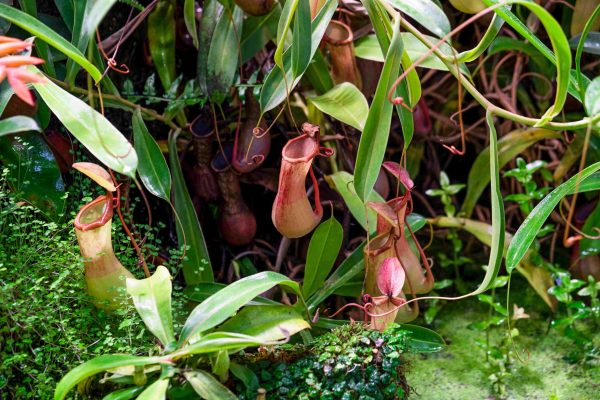
Over the years, many plant breeders have worked hard to come up with these Venus flytrap-inspired plants with different sizes, colors,… via tissue culture. These varieties of Venus flytraps are only available in specialty plant nurseries but not online garden stores to protect against extinction.
How to Protect Plants – Landscaping Services Bothell WA
How Carnivorous Plants Work
Venus flytraps take nutrients from trapping insects instead of soil or fertilizer like other plants. Designated with serrated structures, they’re possibly able to capture and squeeze their prey. After that, they will release digestive enzymes to break down the prey so that they could easily turn their “meal” into nutrients. If nothing is trapped, then after a day, it will open back up to create a new trap.
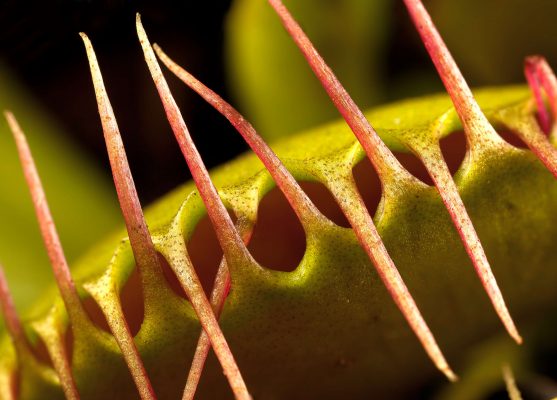
Venus Fly Trap Care Tips – Landscaping Services Bothell WA
Because of the difference compared to other usual plants, you need to understand what a Venus flytrap needs to have proper care with specific conditions. Similar to other plants, Venus flytraps also need factors from the natural environment, including light, water, soil, and nutrient. We will talk about each factor in turn to grow Venus flytraps both indoor and outdoor.
Tips: Always keep the soil moist with good air circulation and avoid planting in regular potting soil. Venus fly traps grow in even nutrient-poor soil without fertilizer but moisture enough.
>>> Read more: Keep Soil Moisture with Irrigation
Don’t hesitate to call West Seattle landscapers at (206) 279-1450 TODAY!
Soil
Regardless of growing Venus flytraps outdoors or indoors, the first condition you need to consider is the soil. Venus fly trap requires a high acid level of soil rather than most houseplants, therefore, it’s better to have these carnivorous plants in sphagnum moss or a mixture of peat moss and perlite.
Related to How to Control Soil Erosion?
You can also use some wood-based materials such as bark, pure fiber, or wood chips as an alternative to peat moss as long as they are not chemically treated so that they can provide a low pH level to soil.
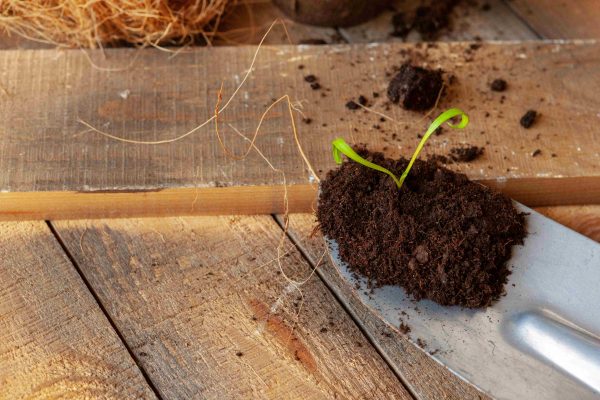
Venus flytraps grow relying on nutrients from prey insects instead of soil, so remember not to add any additional nutrients such as compost, fertilizer, or potting soil into your bare soil. This is counterproductive and can kill your plants.
Sunlight
For best Venus flytrap care, you need to know that this plant is really into the bright sun. The more sun they receive, the faster they can grow. According to Washington landscape professionals in the garden industry, Venus fly traps need 12 hours of daily light during their growing season, in which at least 6 hours of direct light and 2 – 4 of bright indirect light if you place them outdoors. Especially under the sun of summer, let’s move your Venus fly trap outside to soak up that bright sun.
If your area does not receive much direct light from the sun, use a full spectrum light in the blue wavelength about 6 – 8 inches above the plants. And you will need to light these Venus fly traps at least 12 – 16 hours a day.
Water
Apart from light, the Venus fly trap does love water and needs to be kept consistently moist. It’s better to use distilled water or rainwater rather than water with chlorine or dissolved minerals. Though this plant prefers moisture, do not keep Venus fly trap soggy as it will increase the risk of rot.
The ideal way to water Venus fly traps is not to water them from above. Sitting the base of their root in water for about half to one inch a few hours a time and every few days. The moss and bark will absorb water through the plant without being soggy. Some people leave Venus flytraps in saucers of water but it will harm the plant over time.
Warning: Do not use tap water that contains minerals since it will be counterproductive to the plant. Just only use rainwater and distilled water.
Explore: Best Outdoor Water Feature Ideas
Fertilizer
Do not use fertilizer for any Venus fly trap care since it doesn’t like compost in any case. They prefer mineral-free soil and distilled water, and do not need additional nutrients except insects. You can totally kill your Venus fly yourself with fertilizer!
>>> See our list of landscaping services here!
What to Feed Venus Fly Trap
Venus fly trap gets nutrients from small insects as long as they are all alive. Dead pests will not trigger the plant to digest food inside and of course, the Venus fly trap adapts to capturing insects on its own without any help. If you grow Venus flytraps outdoor, don’t worry about what and how to feed them as they catch prey naturally to grow.
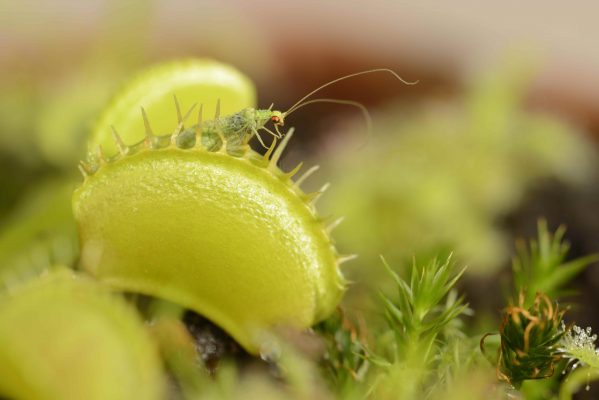
However, if you grow them in a closed terrarium which isn’t any bugs available, let’s consider trapping a fly, mealworm, spider, or other small morsels to feed the plant indoors. Every few days and about 1 – 2 insects a month would be perfect. Overfeeding will not help your Venus fly trap grow well but sick. And remember not to feed any bugs that are larger than one-third the size of a trap.
There are some trigger hairs inside the trap whenever they detect movements taking place after the trap has closed. Once detected, the hairs will be active to release the digestive enzymes thanks to the insect’s continued movement so that the plants are able to absorb nutrients contained in the bugs. That’s why you will need to capture live insects instead of dead ones since they will not trigger the trap.
Tips: Good thumb rule is not to feed a Venus fly trap with bugs larger than a third of the trap size.
>>> Related: Chinch Bug Damage – Manage and Cover
Venus Fly Trap Care Indoors in Winter Dormancy Period
Not only humans but also trees like Venus flytraps need to go through a dormancy period during winter to survive. When autumn arrives and the amount of sunlight seems to decrease, their leaves will turn black and even appear dead (but they are not already dead but resting). Just let them be and don’t try to provide food or energy to fight against its winter dormancy.
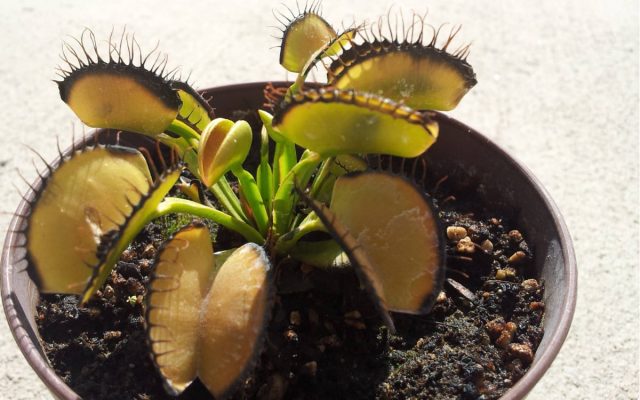
This dormancy period can last about 3 – 4 months and is essential for Venus fly trap care. Let them follow its natural rhythm instead of forcing them to awake during this period. Regardless of indoors or outdoors, the plants need to rest and be placed under little light in the winter.
Do not try to have artificial light to keep them alive when you see these signals as it would eventually kill your plants.
Maybe you’re interested in: Artificial Turf for Low Maintenance
Remember to keep the soil moisture all the time, but not soggy, and not to feed them with insects or bugs. Bring them indoors with a temperature of 35 to 50°F and place them in a garage or unheated basement. Always check whether there are fungi on the plant and get rid of them manually.
When the weather gets warmer in the early spring, allow your Venus fly trap to expose the sun gradually. If you directly place them under full sun, it will harm your plants immediately.
FAQs
Do Venus Flytraps Need to be in Terrarium?
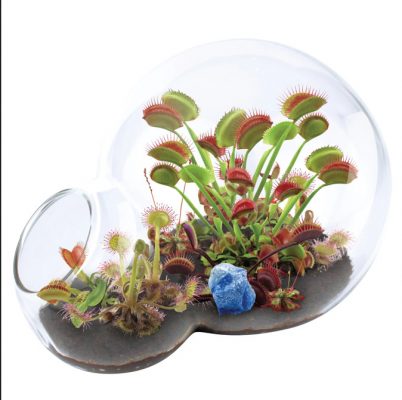
Many gardeners try to plant Venus fly traps in a terrarium, however, contrary to common belief, Venus fly traps do not need to be in a terrarium. This will cause the plant to develop rot and death. Also, the temperature usually gets too high in the terrarium because of its amplification by the sun leading to leaf burn.
Can Venus Flytrap Plants Hurt Person?
Don’t worry, the answer is NO. The action of the trap is not strong enough to hurt a human’s hand even if you are incident to stick your finger. However, don’t try to play with the Venus fly trap by sticking your finger into the trap. Closing the trap many times can take a lot of plant energy, which is produced only for capturing insects to grow.
Can Venus Flytraps Survive without Sunlight and Bugs?
They cannot survive without sunlight but bugs. Every plant needs sunlight to grow, even when they are in a dormancy period. But these plants can go on without being fed. They are just weaker and slow-growing and will get stronger right after having nutrients from a bug twice a month.
To have more consultation about garden service, contact Green Arbor Landscaping for more details:
- Phone: (206) 279-1450
- Email: info@greenarborlandscaping.com
- Website: https://www.greenarborlandscaping.com/

